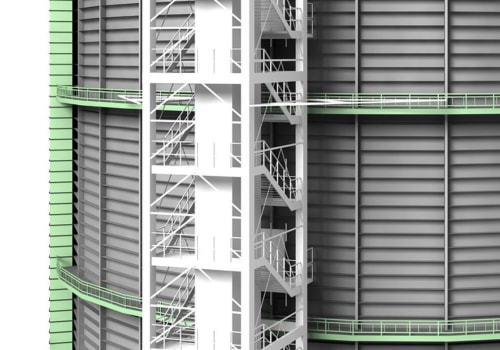In the dynamic world of advertising, where creativity meets strategy, the ability to effectively manage and deploy campaigns is paramount for client success. In Hawaii, a unique blend of cultural richness and modern marketing innovation has led local advertising agencies to adopt a powerful framework known as silo architecture. This approach not only enhances collaboration and efficiency but also ensures that every aspect of a campaign is aligned with the client's overarching goals. In this article, we will explore how Hawaii's advertising agencies implement silo architecture, transforming concepts into clicks and driving measurable results for their clients. From the initial brainstorming sessions to the final deployment of campaigns, discover how this architectural model is reshaping the advertising landscape in the Aloha State and contributing to the success stories of businesses across various industries.
Understanding Website Silo Architecture
Website silo architecture refers to the method of organizing a website's content into distinct categories or "silos." Each silo contains related content that reinforces the main topic, ensuring a logical flow of information. By structuring a website this way, businesses can improve their site's usability and increase its relevance to search engines.
The Importance Of Silo Architecture
Silo architecture is a design framework commonly used in various fields, including information technology, organizational management, and data management. It refers to the practice of isolating different departments, functions, or systems within a larger entity to prevent interference and promote specialization. Here are some key points highlighting the importance of silo architecture:
- Improved Organization: Silo architecture helps in categorizing information and resources, making it easier to manage and retrieve data within specific domains.
- Enhanced Security: By compartmentalizing data and applications, silo architecture can limit access to sensitive information, reducing the risk of data breaches.
- Optimized Performance: Isolated environments can be optimized for specific workloads, leading to improved performance and resource utilization.
- Scalability: Silo architecture allows for independent scaling of different components, enabling organizations to grow specific areas without affecting the entire system.
- Reduced Complexity: By separating different functions or services, silo architecture simplifies troubleshooting and maintenance, leading to less downtime and better reliability.
- Focused Development: Teams can work within their silos without the distractions of unrelated projects, fostering expertise and innovation in specific areas.
- Facilitated Compliance: Isolated data handling can make it easier to adhere to industry regulations and standards, as specific silos can be designed with compliance in mind.
In summary, the importance of silo architecture lies in its ability to enhance usability, improve SEO, facilitate content management, and support organizational efficiency. Whether applied to websites, software design, or organizational structures, silo architecture helps in creating a more organized, efficient, and user-friendly environment.
The Elements Of Effective Silo Architecture
To create an effective website silo architecture, businesses should consider the following elements:
- Clear Categorization: Define main categories that align with the business's core offerings.
- Interlinking: Strategically link related content within each silo to create a comprehensive network of information.
- Keyword Optimization: Use relevant keywords within each silo to enhance SEO efforts and improve visibility.
- Visual Design: Employ a clean, organized layout that guides users through the silos seamlessly.
By focusing on these elements, advertising agencies in Hawaii can help their clients build websites that not only attract visitors but also convert them into customers.
How Hawaii's Advertising Agencies Implement Silo Architecture
Hawaii's advertising agencies are at the forefront of utilizing website silo architecture to achieve client success. Here's how they implement this strategy:
- Content Organization: Agencies create a hierarchical structure for website content, categorizing information into distinct silos based on themes or services, making it easier for users to navigate.
- Keyword Targeting: Each silo is optimized for specific keywords, allowing agencies to enhance SEO by focusing on relevant search terms that attract targeted traffic.
- Internal Linking: Strategic internal linking between pages within the same silo helps improve user experience and boosts the relevance of content in search engine algorithms.
- Dedicated Landing Pages: Agencies develop targeted landing pages for each service or product silo, enhancing conversion rates by providing clear and focused messaging.
- Regular Content Updates: Maintaining and regularly updating siloed content ensures that information remains relevant and engaging, which helps retain visitor interest and improve rankings.
- Analytics and Performance Tracking: Agencies utilize analytics tools to monitor the performance of each silo, enabling them to make data-driven adjustments and optimize strategies for better results.
Through the successful application of silo architecture, advertising agencies in Hawaii enable their clients to boost online visibility, improve user experience, and achieve superior business outcomes. This strategic content organization not only enhances SEO but also fosters a more intuitive browsing experience for users, resulting in increased engagement and higher conversion rates. If you're interested in finding local advertising services, consider searching for "advertising near me."
The Role Of Content In Silo Architecture
Content is the backbone of any successful website silo architecture. In Hawaii, advertising agencies emphasize the following aspects of content creation:
- Relevance: Content must be tailored to address the needs and interests of the target audience.
- Quality: High-quality content is essential for user engagement and establishing authority.
- Diversity: Incorporating various content formats—such as articles, videos, and infographics—keeps users engaged and encourages sharing.
By prioritizing these content aspects, advertising agencies can create compelling silos that draw visitors and keep them on the site longer.
Challenges of Implementing Silo Architecture
While the benefits of silo architecture are clear, several challenges exist:
- Data Fragmentation: Silo architecture can lead to data being isolated within different departments, making it difficult to share insights and collaborate across the organization.
- Inefficient Communication: Departments may develop their own processes and tools, which can hinder effective communication and create silos of information that are hard to integrate.
- Increased Maintenance Costs: Managing multiple siloed systems can lead to higher operational costs, as each department may require separate resources, software, and maintenance efforts.
- Scalability Issues: As organizations grow, maintaining siloed systems can complicate scalability, making it harder to adapt to new market demands or technologies.
- Limited Visibility: Leadership may struggle to gain a holistic view of organizational performance, as key metrics and data insights are spread across various silos.
- Resistance to Change: Employees accustomed to siloed operations may resist efforts to integrate systems or collaborate more closely, making it challenging to implement a unified approach.
For organizations looking to enhance collaboration and break down silos, partnering with a reputable advertising agency in Hawaii can provide valuable expertise in creating integrated marketing strategies that foster communication and alignment across departments.
How To Choose The Right Advertising Agency For Silo Architecture
Choosing the right advertising agency for your silo architecture project involves careful consideration of various factors to ensure that the agency can effectively communicate your vision and reach your target audience. Here are some steps and criteria to help you make the best choice:
- Specialization in Architecture and Design
Look for agencies with a portfolio that showcases work specifically in architecture and design. They should understand the nuances of the industry, including technical terminology and the aesthetic values important to potential clients. - Creative Portfolio
Evaluate their previous campaigns for creativity and originality. A strong portfolio should demonstrate their ability to create visually compelling advertisements that resonate with your target audience. - Client Testimonials and Case Studies
Check for client reviews and case studies that highlight successful campaigns. This will give you insight into their work ethic, effectiveness, and ability to deliver results. - Understanding of Target Audience
The agency should have experience in identifying and reaching the specific demographics relevant to Silo Architecture. They should use data-driven strategies to appeal to potential clients, investors, and stakeholders. - Integrated Marketing Approach
Choose an agency that offers a comprehensive marketing strategy that includes digital marketing, social media, traditional advertising, and public relations. This ensures a cohesive brand message across all platforms. - Budget Alignment
Ensure the agency can work within your budget while still delivering quality services. Discuss pricing models upfront to avoid any surprises later. - Communication and Collaboration
Assess their communication style and willingness to collaborate. A good agency should be open to feedback and able to work closely with your team to understand your vision and goals. - Innovation and Trend Awareness
The ideal agency should stay up-to-date with the latest trends in architecture and advertising, offering innovative solutions that keep your brand relevant and engaging.
By following these steps, you can select an advertising agency that aligns with your goals and can effectively promote your silo architecture projects.
Contact A Reputable Advertising Agency In Hawaii
As Hawaii's advertising agencies continue to embrace silo architecture, they are paving the way for more focused and effective marketing campaigns. This approach allows for the clear organization of content and targeted messaging, which not only enhances user experience but also significantly boosts search engine rankings. By segmenting information into silos, these agencies can better cater to specific audience needs and interests, ensuring that clients achieve their desired outcomes in a competitive digital landscape. The ongoing evolution of this strategy demonstrates the agencies' commitment to innovation, enabling them to stay ahead of the curve in an ever-changing market.
For those seeking a reputable digital marketing ad agency that excels in implementing these strategies, Myna Marketing stands out as a leader in the field. Not only do they specialize in silo architecture, but they also offer a comprehensive suite of services, including social media management, search engine optimization, and website design. Their growing popularity can be attributed to their proven track record of delivering results and their dedication to client satisfaction. As businesses increasingly turn to Myna Marketing for their digital needs, they can trust that they are partnering with a reputable agency that prioritizes both creativity and effectiveness in every campaign.






